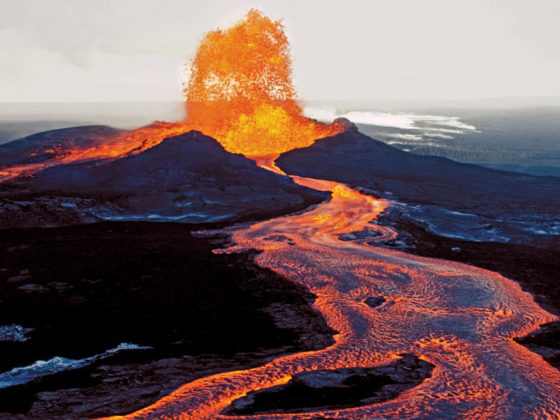KĪLAUEA
Location: Hawaii, USA
Continuous eruption: From 1983
Explosivity Index: 4
Kīlauea is the youngest volcano on Hawaii’s Big Island. It is located on the southeastern slope of neighbouring Mauna Loa and for many years was thought to be a satellite rather than a separate volcano. Research has shown, however, that Kīlauea has its own plumbing system which carries magma to the surface from more than 60km below. Moreover, the summit lies on a line of volcanoes that includes Mauna Kea and Kohala, but not Mauna Loa.
Kīlauea’s eruptions have claimed parts of the island’s highways, rainforests, homes and even lives. Locals leave leis as offerings to the Fire Goddess Pele who is believed to reside in the lava lakes of Halema‘uma‘u crater.
